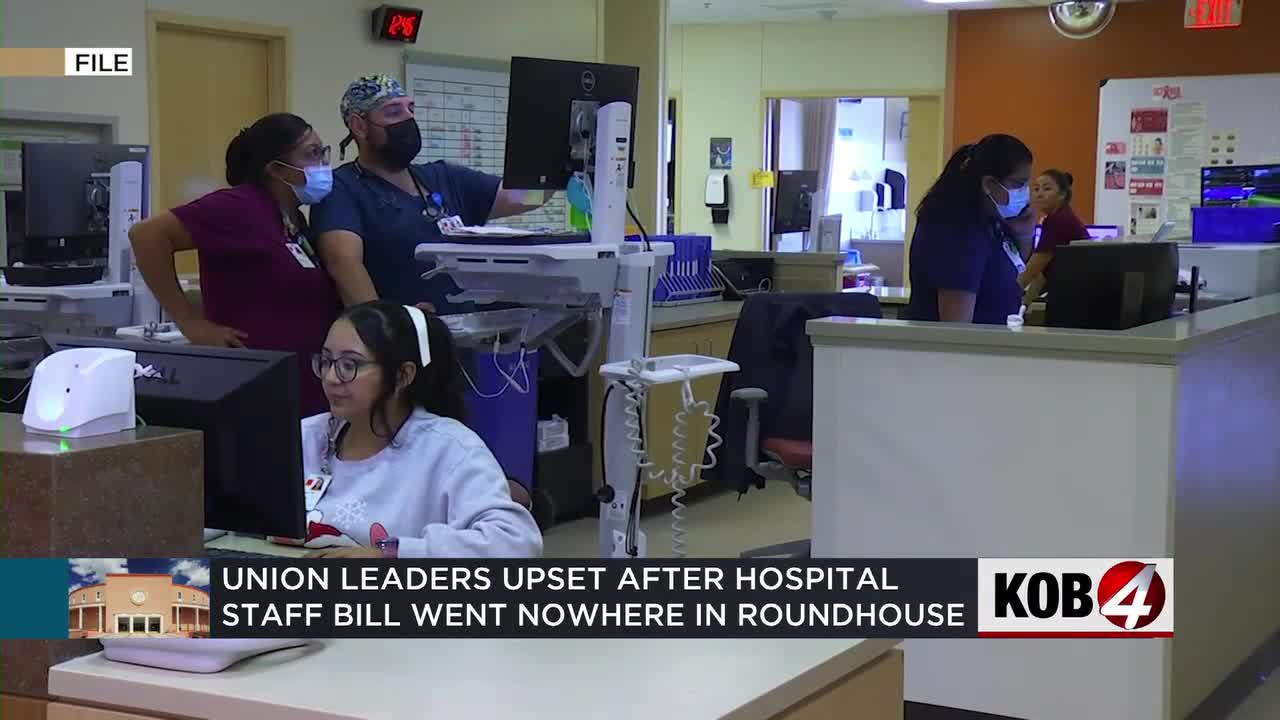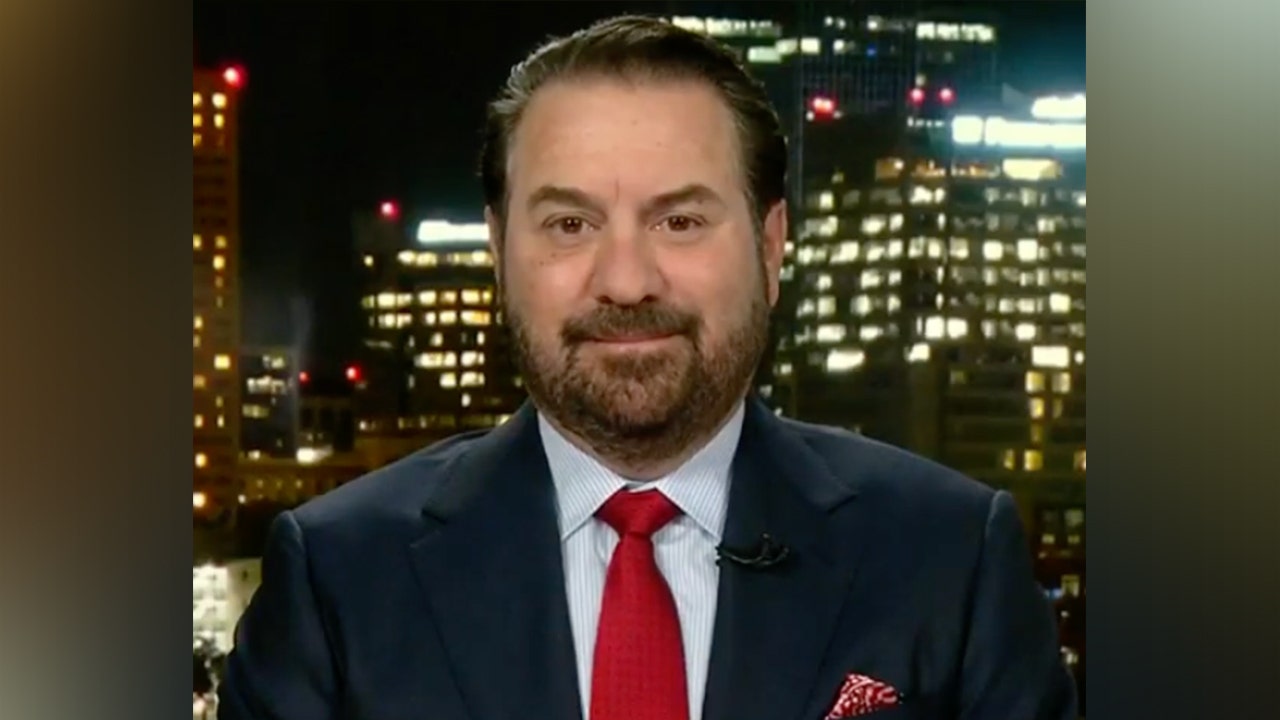New Mexico
With nearly $5B unspent, legislative staff recommend tighter controls on large public projects – Source New Mexico

Billions in public funds meant to pay for new buildings, vehicles and equipment for local communities throughout New Mexico have not been spent, and legislative staff are recommending state officials create a new government office to help complete projects.
At the end of September, there was nearly $5 billion in unspent funds set aside for 4,900 projects funded by the state’s “capital outlay” program, state analyst Cally Carswell told the Legislative Finance Committee on Tuesday.
Lawmakers pass a capital outlay bill each year to pay for all or part of new infrastructure or construction — things like buildings, parks, roads or acequia upgrades.
There are 766 active projects, which lawmakers have given at least $1 million for fiscal year 2024, accounting for $3.6 billion in total, according to data produced by legislative staff.
Of those, 415 are on schedule, 170 are behind schedule, and 181 have had no activity, or the local governments responsible have not sold the bonds needed to raise the money, or are facing “significant obstacles to completion,” according to the report.
These include, for example, the relocation of the Guadalupe County Magistrate Court, a few senior center projects, numerous projects with the city of Santa Fe, money set aside for road construction and money for a therapeutic group home run by the New Mexico Children, Youth and Families Department.
Only 11 projects funded with more than $1 million have been completed or have been granted an extension, according to the LFC data. This includes the Vladem Contemporary Museum of Art in Santa Fe, upgrades to the Albuquerque Police Department evidence lab, a vehicle for the Albuquerque Fire Department, and upgrades to a building at Eastern New Mexico University.
Earlier in the year Carswell told lawmakers that construction costs are increasing, and contractors are having difficulty attracting and retaining qualified workers to meet demand for construction in the state.
In her update Tuesday, she said the situation remains the same.
Carswell said almost all of the 1,400 projects lawmakers approved in the last legislative session were funded with money out of the state’s General Fund, its biggest single pot of public money.
The source of the money matters because the law that authorizes spending requires each capital outlay project to spend at least 5% of the money within a year. When that doesn’t happen, the money gets pulled back into the General Fund, Carswell said.
Rep. Jack Chatfield (R-Mosquero) asked how paying for capital outlay projects using the General Fund rather than by selling bonds affects the state’s score from bond rating agencies.
It does not put the state in a bad position, Carswell said.
But she cautioned that if state officials borrow too much money in order to pay for capital outlay projects, that could put them in a worse position with the rating agencies.
“It is an issue that they have already flagged to the Board of Finance as something that they are concerned about,” she said.
She suggested lawmakers change state law to lower the maximum amount of money they can borrow each year to pay for these projects.
Three key state agencies that manage most capital outlay money: the Department of Finance and Administration, the Indian Affairs Department, and the New Mexico Environment Department, she said, and each issued grant agreements for eligible projects.
Now, communities need to keep better track of signing those agreements and spending capital outlay money, Carswell said. Lawmakers can use the data about projects given at least $1 million to perhaps call those local governments and encourage them to get moving, she said.
The LFC expects lawmakers to have billions more in capital outlay requests during the 2024 session. If approved, those projects are likely to face a “construction market saturated if not oversaturated, where it’s difficult to start new things and complete those already in the pipeline,” Carswell said.
Anticipating higher costs, some state agencies and higher education institutions have already asked for more money on top of their original requests for next year. Carswell said this means local governments are already facing significant changes in the expected project costs over the summer and fall.
Local governments and others who have received these capital outlay funds have until Nov. 22 to provide information to state agencies about unexpectedly high costs for existing projects, she said.
The goal for these reports is to inform Legislative Finance Committee analysts about which projects are stalled, delayed or otherwise facing challenges due to cost increases. Carswell testified that the LFC expects to present the results of that survey to lawmakers in December.
And in 2025 and beyond, Carswell said she recommends lawmakers consider setting an earlier deadline for local capital outlay requests, and creating a basic method of vetting and tracking projects that get state money.
That could allow lawmakers to fund planning and design separately from construction, so that the larger amounts of money would be reserved for major construction projects with proper plans and that are ready to go, she said.
House Appropriations and Finance Committee Chair Rep. Nathan Small (D-Las Cruces) said lawmakers have asked Gov. Michelle Lujan Grisham’s administration to standardize its capital outlay requests, and that “there’s an openness from the executive to do that.”
Small said as oil production becomes increasingly uncertain in the future, the state’s entire system for funding capital outlay projects comes more into question, because any variation in that industry affects the entire program.
Small said he is reluctant to constrict too tightly the amount of money provided for capital projects.
”But clearly we need to establish other funding opportunities and other sources to support capital (outlay),” he said.

New Mexico
Donovan Dent, Richard Pitino’s top New Mexico scorer, commits to Mick Cronin’s UCLA Bruins

WATCH: Xavier’s season ends in NCAA Tournament loss to Illinois
Xavier’s season came to an end in Milwaukee Friday night after an 86-73 loss to No. 6 Illinois at Fiserv Forum.
Many Xavier Musketeers fans hoped new head coach Richard Pitino would bring his leading scorer at New Mexico this past season, 6-foot-2 guard Donovan Dent, to XU.
Dent, considered one of the best players available in the transfer portal, announced via Instagram Friday night that he’s headed to UCLA to play for Mick Cronin’s Bruins. Dent is from California.
Joe Tipton reported via Twitter/X that Dent chose UCLA over Kentucky and Gonzaga.
Dent, the Mountain West Conference Player of the Year, ranked 12th in Division I in scoring with 20.4 points per game. He had 17 points on 8-of-13 from the field and eight assists in New Mexico’s 72-64 win against the Bruins in November.
Dent scored 21 points in the Lobos’ NCAA tournament win over Marquette, and 14 points in their Round of 32 loss to Michigan State.
New Mexico
New Mexico lawmakers pass bill allowing immigrants to work as police

New Mexico
Union leaders upset after hospital staff bill went nowhere in Roundhouse

Hospital staffing has been a hot topic for a while, but it didn’t get much traction in this past legislative session. House Bill 138 would have established a staff to patient ratio but stalled in committee.
ALBUQUERQUE, N.M. — Hospital staffing has been a hot topic for a while, but it didn’t get much traction in this past legislative session. House Bill 138 would have established a staff to patient ratio but stalled in committee.
The New Mexico Patient Safety Act was one of several pieces of legislation that never made it past the finish line.
“The patients are the ones that are hurting, besides our nurses, because they don’t have enough nurses or any healthcare employees to run the facility,” said Yolanda Ulmer, the District 1199 New Mexico CEO.
The bill would limit the number of patients a nurse can care for on shift, forcing hospitals to create staffing limits. Local union leaders said the nursing shortage is causing burn out and this would help retention.
“You have patients waiting to get medicines, you have patients waiting to be discharged, you have patients waiting in the hall to be seen, you know nurses are spread so thin,” said Ulmer.
A spokesperson for UNM Health said they did not support HB 138 initially, and one “key initiative has been expanding the nurse residency program in response to the UNM College of Nursing increasing its class sizes.”
“Within two years, nurses are leaving the profession after getting their degree, and they are just not staying. Working conditions is the number one reason that they site,” said Adrienne Enghouse, RN who is also an organizer with United Health Professionals in New Mexico.
KOB 4 reached out to the New Mexico Hospital Association as well. Along with UNMH, they believe, “More efforts must be focused on training and recruiting additional healthcare workers to serve New Mexico.”
“The hospital association and the hospitals have brought forth solutions that have not sent us in the right direction. It is time for us to turn this ship around and head in the right direction. It is a multi-prong approach, absolutely, but they must start adding working conditions and how we perform our work as part of one of the things that needs fixed,” said Enghouse.
Full statement from UNM Health:
“As stated before, UNM Hospital does not support legislation mandating hospital staffing ratios, as such measures pose significant risks, including the potential closure of beds, reduced capacity to care for those in need, and limitations on accepting critical patients from across New Mexico. Staffing ratios fail to consider the varying levels of patient acuity—a critical factor in determining safe and appropriate care. A “one size fits all” model of care undermines the flexibility hospitals need to address the unique and dynamic needs of their patients. Maintaining adaptability in staffing is essential to continuing our mission of delivering exceptional care to our community.
Mandated staffing ratios will not fix health worker shortages or make health care more safe in New Mexico. For nearly five years, UNM Hospital has taken proactive steps to address higher patient volumes and work through the national health worker shortage. One key initiative has been expanding the nurse residency program in response to the UNM College of Nursing increasing its class sizes. This approach creates a sustainable nursing labor pipeline that strengthens our staffing capabilities. Additionally, we are collaborating with community partners to increase the availability of post-acute care discharge beds, which enhances hospital throughput. By improving the efficiency of care delivery, we are also reducing the length of hospital stays, enabling us to care for more patients.”
Full statement from the New Mexico Hospital Association:
“New Mexico continues to face a severe healthcare workforce shortage that threatens access to care when and where people need it, including a need for nearly 7,000 nurses. Without more healthcare providers readily available, had HB138 passed, hospitals across our state would have been forced to close beds in order to meet the staffing ratios proposed by the bill sponsors, resulting in fewer patients seen and longer waits for care. Community hospitals and healthcare providers across our state recognize and value the doctors, nurses and all healthcare workers who deliver the expert care we need and agree with frontline providers that the number of patients and the severity of their conditions are higher than prior to the pandemic. We do not believe that HB138 would have solved the problems it seeks to address. We need more nurses. We believe that more efforts must be focused on training and recruiting additional healthcare workers to serve New Mexico. HB138 would have caused more families to have to seek care outside of the state and far from their homes by reducing access to care within our state
-

 News1 week ago
News1 week agoTrump’s Ending of Hunter Biden’s Security Detail Raises Questions About Who Gets Protection
-

 Technology1 week ago
Technology1 week agoStreaming services keep getting more expensive: all the latest price increases
-

 Sports1 week ago
Sports1 week agoThe BookKeeper – Exploring Manchester City’s finances during a season of change
-

 Business1 week ago
Business1 week agoTrump Administration Lifts Ban on Sugar Company Central Romana Over Forced Labor
-

 Culture1 week ago
Culture1 week ago‘Can’t-miss’ Men’s NCAA Tournament games on Thursday and Friday: truTV FTW?
-

 News1 week ago
News1 week agoNASA Astronauts Don’t Receive Overtime Pay for Space Mission But Get $5 a Day
-
World1 week ago
Vatican says Pope Francis no longer needs mechanical help to breathe as his health improves
-

 Politics1 week ago
Politics1 week agoJD Vance recalls his wife texting him under table at Silicon Valley dinner: 'These people are f—ing crazy'




















